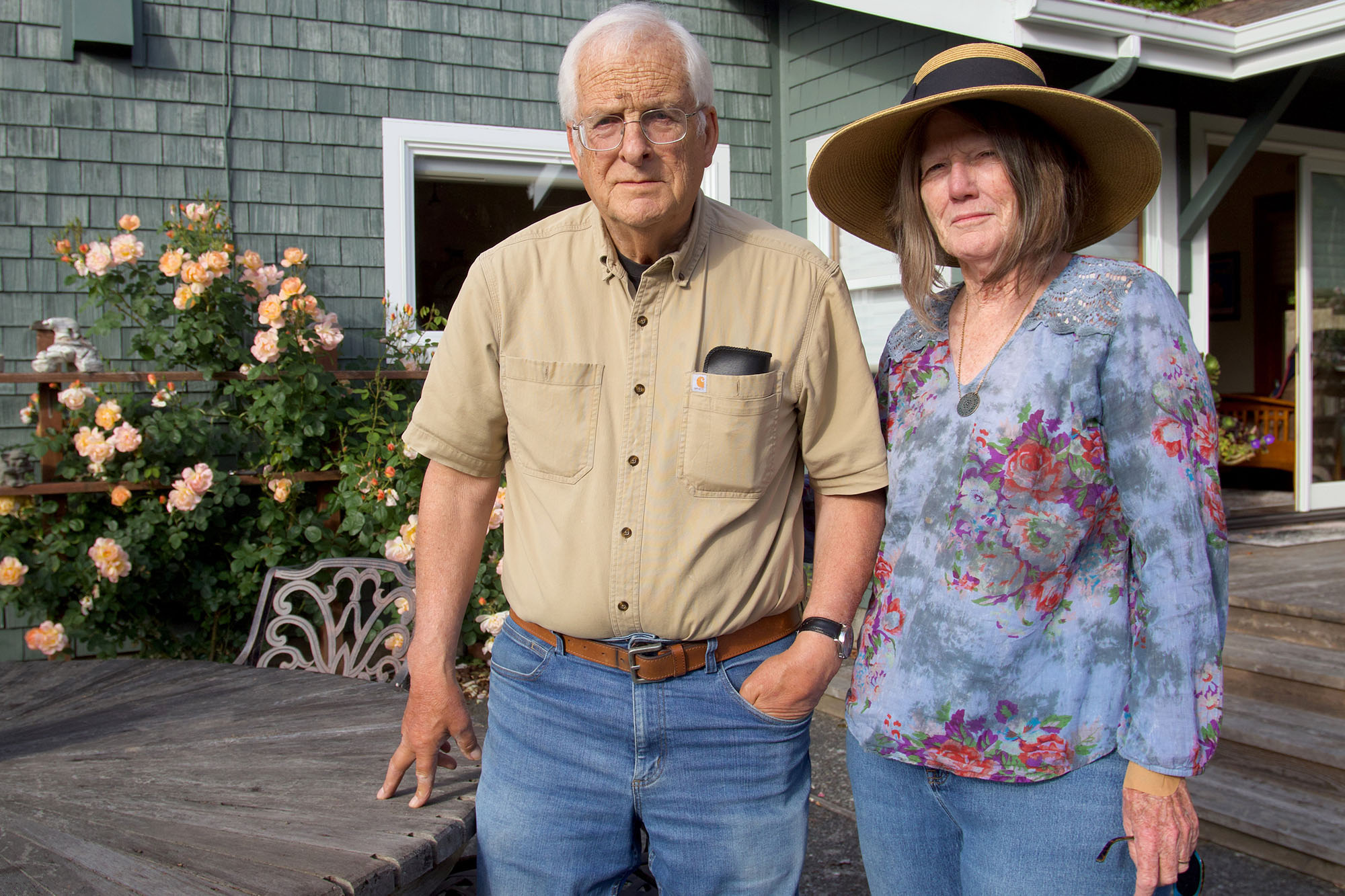|
Getting your Trinity Audio player ready…
|


In recent years, many state health agencies and health care organizations across the country have increased their efforts to grow and diversify the health care workforce. Fostering a diverse workforce is important for birth equity. A growing body of research suggests that a maternity care workforce that reflects the diversity of the people it serves and encompasses a range of provider types can deliver better care and positive outcomes for babies, mothers, and birthing people.
Midwives are key providers for people with low- and moderate-risk pregnancies, and the number of births attended by midwives in California has risen since 2007. A growing recognition of the many benefits of midwifery care in California has contributed to the implementation of the Song-Brown Healthcare Workforce Training Program, an initiative of the California Department of Health Care Access and Information, and Senate Bill 65, the California Momnibus Act. Both include training programs to shore up the midwifery workforce.
Angela Sojobi, PhD, DNP, CNM, is a midwife at Martin Luther King Jr. Community Hospital in Los Angeles, where 94% of the patients are people of color, and 96% are publicly insured or uninsured. She is an assistant professor at the California State University at Fullerton School of Nursing and a member of the CHCF Birth Equity Advisory Group. I met with her for a conversation about her decades of experience as a midwife, the urgent need to recruit more Black midwifery students to advance birth equity, and the importance of perinatal care teams that include ob/gyns, midwives, doulas, and others.
This is the first conversation in a series about the maternity care workforce and what California needs to invest in now to produce better outcomes for mothers and birthing people.
Q: Why did you choose midwifery as a profession?
A: My journey as a midwife started in Nigeria. Believe it or not, it was the career that was picked by my parents. I was 15 years old when I finished high school, and they were debating what to do with me. My mom said, “She loves taking care of people. Put her in nursing school.” And that’s how it all started. Well, they were very right, because I’ve loved midwifery since the day I stepped into the labor and delivery ward. I’ve been doing this since I was 17. I practiced in Nigeria for five years before moving to the US.
Q: You have been a member of the CHCF Birth Equity Advisory Group since 2020, so I wonder how you approach your birth equity work?
A: When I heard that Martin Luther King, Jr. Community Hospital (MLK) was reopening [in 2015], I really wanted to be in this community and be a part of taking care of women [of color]. I wanted to make sure that the unacceptable maternal mortality and morbidity statistics that exist on a broader scale weren’t going to exist where I was working.
On the clinical side, I started by making sure that there were more nurses [of color] working on the labor and delivery floor. Anybody else who wanted to work there could work there, but we made sure that they were all trained to interact with people who were different from them. If that’s not what you want to do, then step aside and let the people who can take care of those patients step in while you figure out how you’re going to change yourself, learn, or go somewhere else where you’re comfortable, because we don’t want to force anybody to do what they don’t want to do.
The perinatal statistics at MLK are better than the state and national averages. Our cesarean-section rates, first-birth cesarean birth rates, neonatal intensive care unit admissions, and perinatal morbidity stats are among the lowest. We have not had any perinatal mortality since we opened, thank God!
Q: Interest in advancing birth equity is increasing across the nation. What does birth equity look like in practice to you? What are you teaching your mentees?
A: Birth equity is when every human being — regardless of who they are, their race, ethnicity, whether they’re rich or poor— is given the opportunity to birth the way they want to. They’re listened to. They have autonomy. They feel heard and seen. I mean, that’s it. It’s just that simple.
It’s a patient coming in and saying, “I’m in pain,” and the provider says, “Tell me where the pain is.” Not like, “Yeah, labor hurts.” It’s the doctor, midwife, or nurse asking, “Hey, may I come in?” rather than just barging in. “Is it OK if I check you?”
It’s also knowing that the providers who are there for you care about you. They’re going to support you through this. You’re not alone, and you will make decisions together.
The most vulnerable time in your life, when you’re in pain, is not the time you want to try to figure out, “Does this provider like me? Is this person going to treat me well?” It’s the time for a person to come in and know that, “OK, I’m here. I’m home. I’m going to be well taken care of.” When we’re all sick, where do we want to go? We want to go home.
Q: Research shows that midwifery care is as good as or better than care provided by obstetricians in hospitals, and that a growing number of mothers and birthing people – especially if they are Black – want midwives as their maternity care providers. Despite this growing demand, there remain significant barriers to recruiting and training midwives. What do you see as the main obstacles, and how can they be addressed?
A: One of the main challenges is awareness. We have to do a lot of educating so people know that midwives exist. I remember coming to this country as a midwife and working as a registered nurse for five or six years before I figured out that I could actually practice here as a midwife. I didn’t think midwives existed in the US. I didn’t know a single one. So it’s important to educate minorities that midwifery is a valid career path.
A particular challenge in this country is preconceived ideas about who should do what professionally. I experienced it when I was pursuing my second doctoral degree. I was met with a million questions like “Why would you do that? What are you doing that for? Isn’t that a waste of your time?” I thought, “Can you let me be?” For many Black women advancing in their career, it’s as if there’s a box already built for what you’re supposed to do, for what your interests are, for where you can be. For some people this can be discouraging.
Another challenge is money. A lot of people think, “How do I pay for a midwifery education? I can’t afford this. This requires a lot of hours from me. I have family that I have to take care of. I can’t stop working.” You can’t work full-time and go to school full-time, especially in a midwifery program. Many people of color whom I have approached would be incredible women’s health providers, incredible midwives, if they could get financial support and assurance that they would not be in debt for the rest of their lives.
Q: Do Black midwifery students face special obstacles during training?
A: The Black and Latina/x women in my classes at CSU Fullerton are in their 30s and 40s, and the students of other races and ethnicities are younger. They are a year or two out of the baccalaureate programs when they go straight in to midwifery training, whereas our students are waiting until their kids are in college or graduated from high school before they come back to school for themselves. So supporting them getting through a program, you have to look at it differently. Their needs are different.
A lot of the midwives returning to school already have obligations of a life outside of being a student just taking care of themselves. It compounds the difficulty. While they could do the curriculum and the work, taking a pay cut while paying to go to school makes it much harder.
I want to increase the number of midwives of color by encouraging people to apply, making sure that we support them through school, and making sure that they can get into the workforce. So, in thinking about that, I met and spoke with Stephanie [Teleki, CHCF’s director of learning and impact]. Stephanie then introduced me to someone at the UCSF School of Nursing who had the same ideas that I did. We started working together to encourage more minority students or applicants to apply to the midwifery program, and then do everything we can to make sure that they succeed through the program and help them into the workforce.
Q: There are a number of community-based organizations focused on birth equity. What barriers do they face in helping to provide support for families?
A: The ones I’m familiar with are doulas and out-of-hospital midwives, and they are on the other side of the demarcation between the medical world and their world. Not every birth is simple or low risk. Some need medical interventions. When someone is attempting a home birth and they step into the hospital for further assistance, sometimes hospital staff [providers] demonize them.
Women have the right to make a choice where they’re going to deliver their baby and sometimes, things go wrong. When they go wrong, our job is to stand up and assist them without questioning. It wouldn’t matter then where they were trying to deliver their baby. That will not help the situation. Our job is to take over and try to fix the problem. When doulas come into the hospital, they’re also demonized sometimes, as if it’s us in the hospital against them, instead of everyone all working for the common good. We all just want a great outcome for this mom, and for this mom to have a good experience with her birth.
Q: What can be done over the next five years to accelerate the adoption of midwifery care?
A: Midwives can’t do it alone. There are times when we’re going to need ob/gyns. However, ob/gyns don’t need to attend low- to moderate-risk births. Let the midwives take care of the low-risk patients. Statistics have shown that we do it well. We do it with less liability, and we do it with better outcomes. Let the physician take care of the higher risk patients who they have been trained to take care of, and we’ll work together.
Having a baby is a sacred thing. It’s the beginning of life. It’s not a tug-of-war. We should celebrate it together as doulas, as out-of-hospital birth workers, as in-hospital birth workers, as physicians, midwives, whatever we are, and just celebrate it and help this woman have a healthy baby.
Authors & Contributors

Amber Bolden
Amber Bolden, MPP, is a freelance communications consultant and member of the Los Angeles Chapter of the National Association of Black Journalists. She works as a consultant facilitator for the Village Fund, the community grantmaking program for the African American Infant and Maternal Mortality (AAIMM) prevention initiative. She has worked on several community development initiatives and served as a founding member of the Sankofa Birthworkers Collective in the Inland Empire.
Amber is a board member of Tru Evolution, a direct service health equity nonprofit organization that prioritizes the LGBTQ+ community by providing HIV, health, housing and community services.

John Valenzuela
John Valenzuela, a seasoned freelance photographer and former staff photographer for Southern California News Group, captures stories through his lens.





